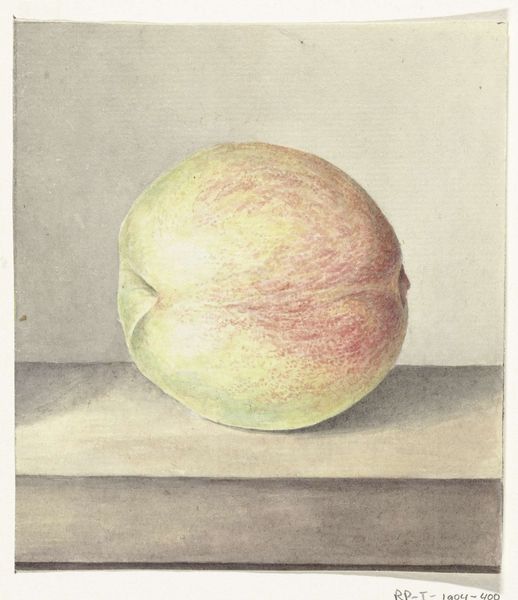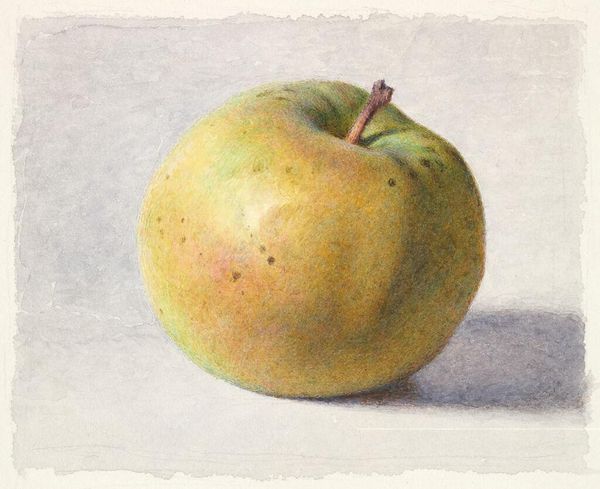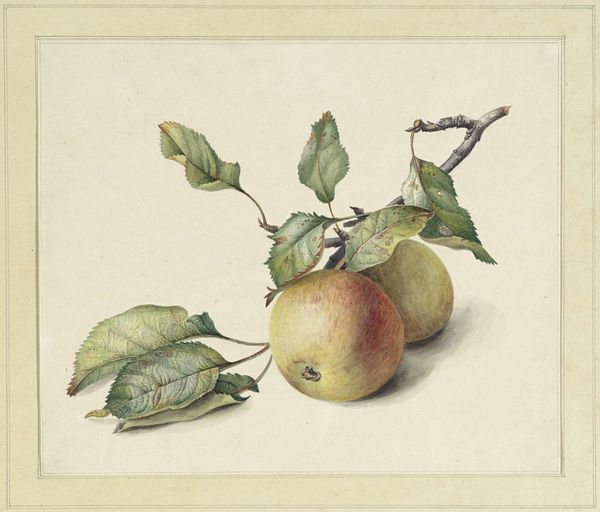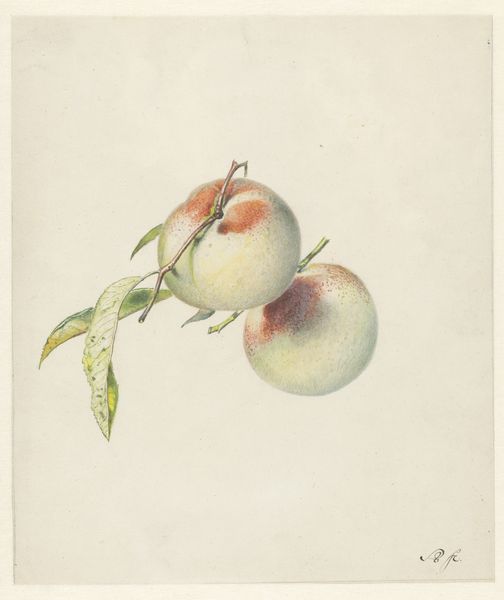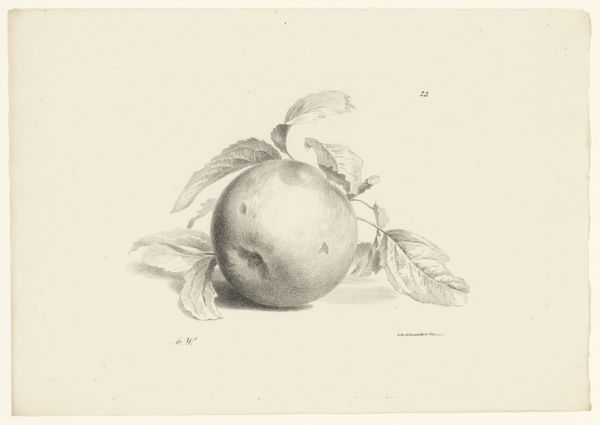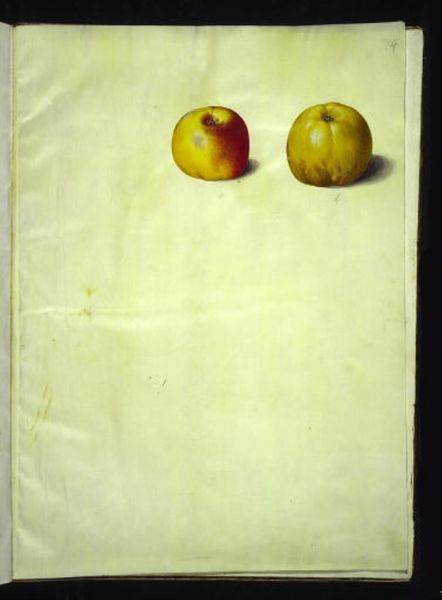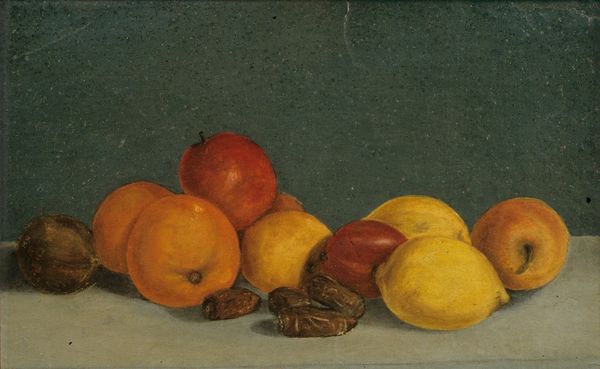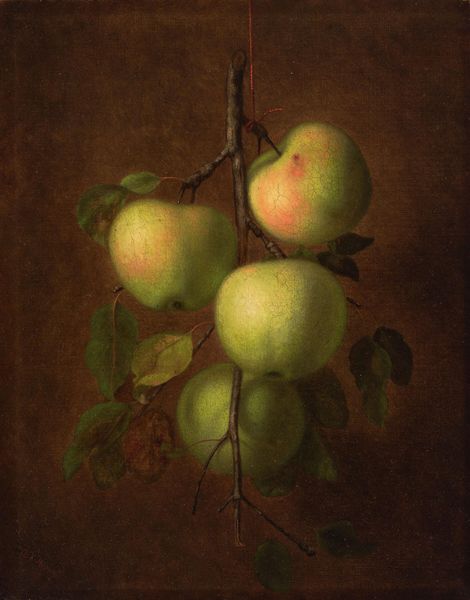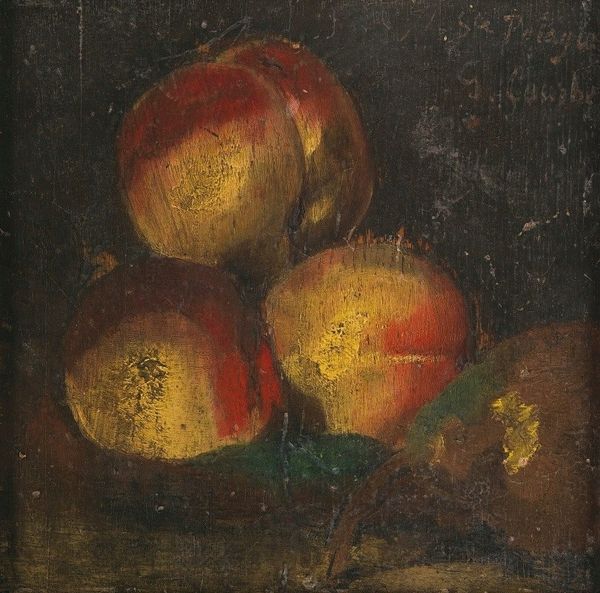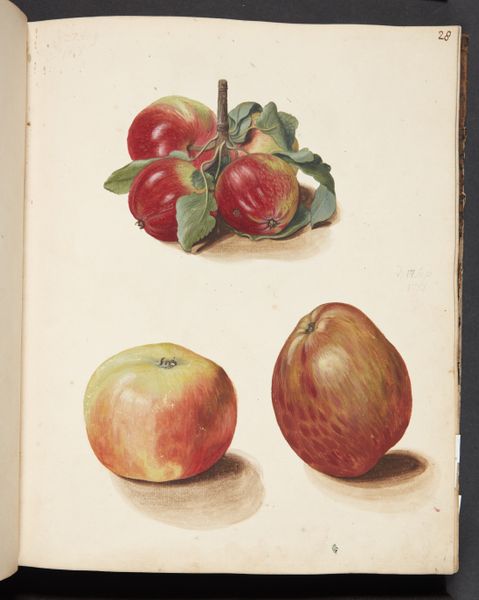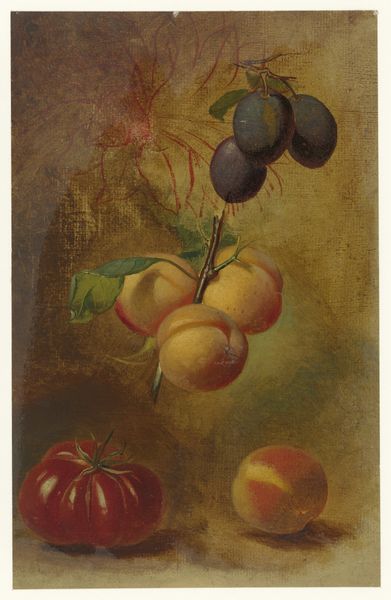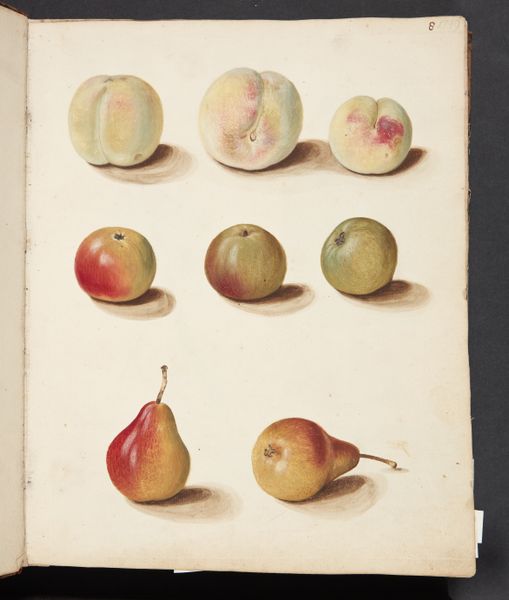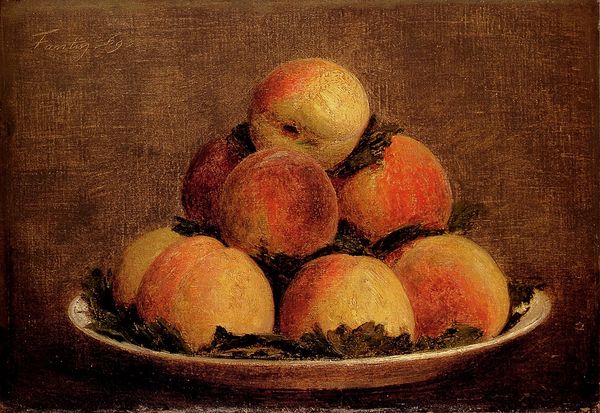
painting, watercolor
#
water colours
#
painting
#
oil painting
#
watercolor
#
abstraction
#
modernism
#
watercolor
Copyright: Julius Bissier,Fair Use
Editor: This is Julius Bissier’s "Cotogna e mela – 28.12.41", painted in 1941 using watercolors. I'm struck by its muted palette and deceptively simple composition. What do you see in this piece, especially considering its historical context? Curator: The year it was made – 1941 – looms large. This wasn't simply a still life created in isolation. Look at the delicate handling of the watercolors, the almost ethereal quality. Can we interpret this as an act of quiet resistance against the backdrop of war? An affirmation of beauty and the intimate, domestic sphere in the face of global conflict? Editor: That's interesting, a way to find comfort during dark times. The use of everyday objects does offer a glimpse into the lives of ordinary people during WWII. Do you think the choice of fruit holds any significance beyond being simple objects? Curator: Absolutely. The quince and apple are deeply symbolic. Consider their representation in art history and folklore—evoking themes of knowledge, temptation, and domesticity. Bissier might be commenting on the roles of women who maintained the home front, producing food and nurturing families, or making the claim that there is more than destruction during this period of war. What do you think? Editor: It is nice how Bissier quietly nods to women as essential actors in their communities. I hadn't considered the symbolic weight of the objects themselves. Curator: Exactly, it pushes beyond a simple painting and becomes a conversation starter! I love how this reflection on the artwork creates many different avenues of investigation, as you mentioned before. Editor: Yes, thinking about it more I notice how such simple imagery holds more complexity than previously appreciated.
Comments
No comments
Be the first to comment and join the conversation on the ultimate creative platform.

